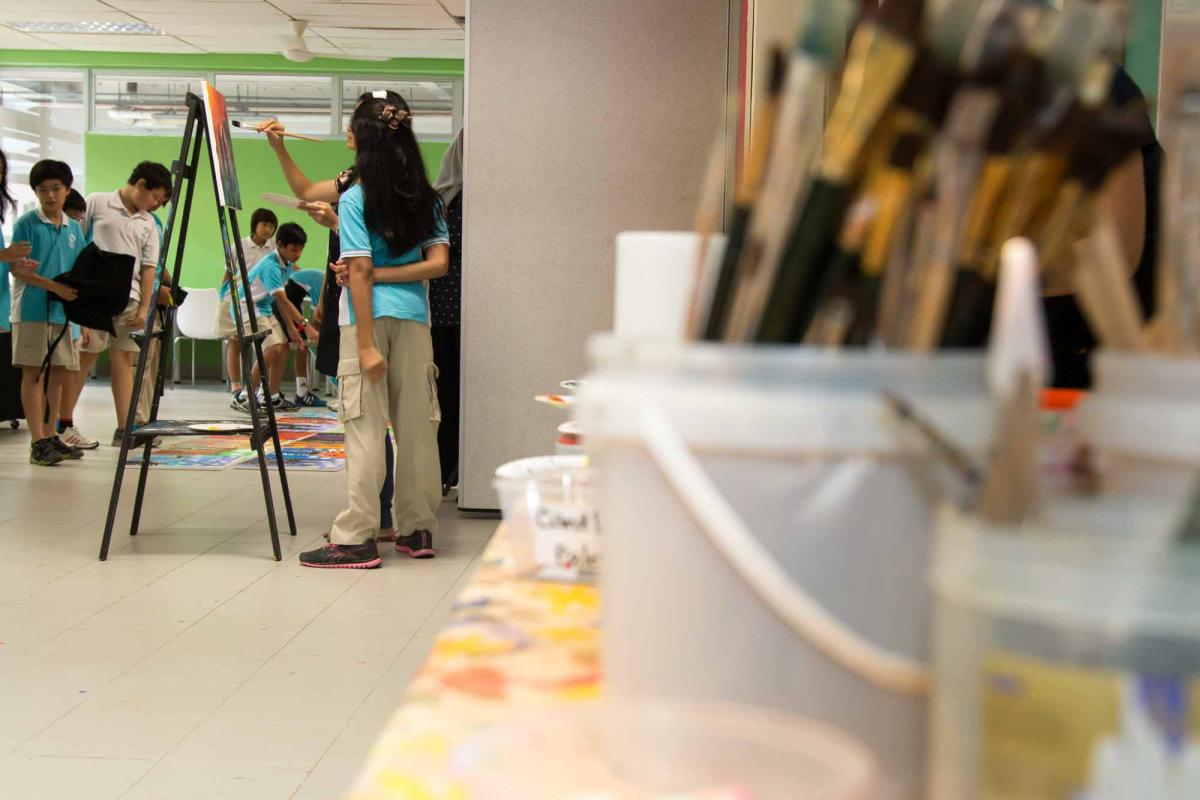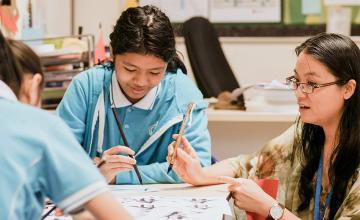7 Elements of Art for Teens

May 15, 2017
From murals to monuments, look around and you will find the 7 Elements of Art wherever you go. Everything from lines to shapes is the foundation of every painting, sculpture, and artwork that your children practiced in school. As parents, it’s also no secret that you can teach this lesson at home. If you’re planning to introduce these elements through an easy-to-do art session, we have a few tips to share.

Step 1: Select a theme
Choose a theme that unites all the elements of art. Be it a life object (fruits and vegetables) or an outdoor scene (beach or playground), the choices are endless. If your children are drawn to colours, gather fruits in different shapes, colours, and textures and place them in a basket to serve as the subject for your little art jam.
Step 2: First Element - Lines
Kick start your lesson with the first element of art, lines. Encourage your children to get creative by using different types of lines, such as horizontal, wavy, and diagonal, to steadily sketch an apple, an orange, a banana, or any other fruits in the basket.
Step 3: Second Element - Shape
Once your children’s fruit sketch comes into a complete form, this is the best time to introduce the second element of art, shape. As you guide your children to sketch different types of fruits, combine the endpoints of every line to unveil a brand new shape.
Step 4: Third Element: Space
Once you’ve drawn a few fruits on paper, take a step back and admire the sketch from a distance. Does your children notice the gap between each fruit that he or she has drawn? Regardless of how far or close the gaps are, tell them that these are called spaces.
Step 5: Fourth Element - Texture
For a compelling sensory experience, get your children to touch and feel the surface of various fruits to understand the element of texture. Pick up a fruit with unique exterior such as rambutan, strawberry, or pineapple. Then, hand them over to your children and encourage them to get imaginative in describing smooth, rough, hard or light objects.
Step 6: Fifth Element - Form
While you’re at it, you can also introduce them to the element of form. Described as a three-dimensional version of a shape, select any piece of fruit and reveal how an object of form can be view and admire from any angles.
Step 6: Sixth Element - Value
An easy way to get your children to understand value is to show them the variation of light and darkness. Apples, peaches, and watermelons are some of many fruits you can use to showcase value. While you’re at it, slice them up and double the lesson as a quick snack.
Step 7: Seventh Element - Colour
Here’s a segment that your little Picasso will enjoy: colouring! While your children fill up the shapes with red, blue and yellow, encourage them to mix these colours to get secondary shades such as purple, green, and orange. Learning to adjust the colour’s intensity will also teach them to create different hues on paper.

Unleashing creativity and imagination are the best ways to make a lesson memorable especially when it’s a topic like 7 Elements of Art. Your children are naturally receptive and incorporating both visual and sensory experiences will turn any lesson into an engaging one. If you’re looking for a fun way to tap into your children’s artistic side, pick up a sketchpad and draw away!

Step 1: Select a theme
Choose a theme that unites all the elements of art. Be it a life object (fruits and vegetables) or an outdoor scene (beach or playground), the choices are endless. If your children are drawn to colours, gather fruits in different shapes, colours, and textures and place them in a basket to serve as the subject for your little art jam.
Step 2: First Element - Lines
Kick start your lesson with the first element of art, lines. Encourage your children to get creative by using different types of lines, such as horizontal, wavy, and diagonal, to steadily sketch an apple, an orange, a banana, or any other fruits in the basket.
Step 3: Second Element - Shape
Once your children’s fruit sketch comes into a complete form, this is the best time to introduce the second element of art, shape. As you guide your children to sketch different types of fruits, combine the endpoints of every line to unveil a brand new shape.
Step 4: Third Element: Space
Once you’ve drawn a few fruits on paper, take a step back and admire the sketch from a distance. Does your children notice the gap between each fruit that he or she has drawn? Regardless of how far or close the gaps are, tell them that these are called spaces.
Step 5: Fourth Element - Texture
For a compelling sensory experience, get your children to touch and feel the surface of various fruits to understand the element of texture. Pick up a fruit with unique exterior such as rambutan, strawberry, or pineapple. Then, hand them over to your children and encourage them to get imaginative in describing smooth, rough, hard or light objects.
Step 6: Fifth Element - Form
While you’re at it, you can also introduce them to the element of form. Described as a three-dimensional version of a shape, select any piece of fruit and reveal how an object of form can be view and admire from any angles.
Step 6: Sixth Element - Value
An easy way to get your children to understand value is to show them the variation of light and darkness. Apples, peaches, and watermelons are some of many fruits you can use to showcase value. While you’re at it, slice them up and double the lesson as a quick snack.
Step 7: Seventh Element - Colour
Here’s a segment that your little Picasso will enjoy: colouring! While your children fill up the shapes with red, blue and yellow, encourage them to mix these colours to get secondary shades such as purple, green, and orange. Learning to adjust the colour’s intensity will also teach them to create different hues on paper.

Unleashing creativity and imagination are the best ways to make a lesson memorable especially when it’s a topic like 7 Elements of Art. Your children are naturally receptive and incorporating both visual and sensory experiences will turn any lesson into an engaging one. If you’re looking for a fun way to tap into your children’s artistic side, pick up a sketchpad and draw away!


